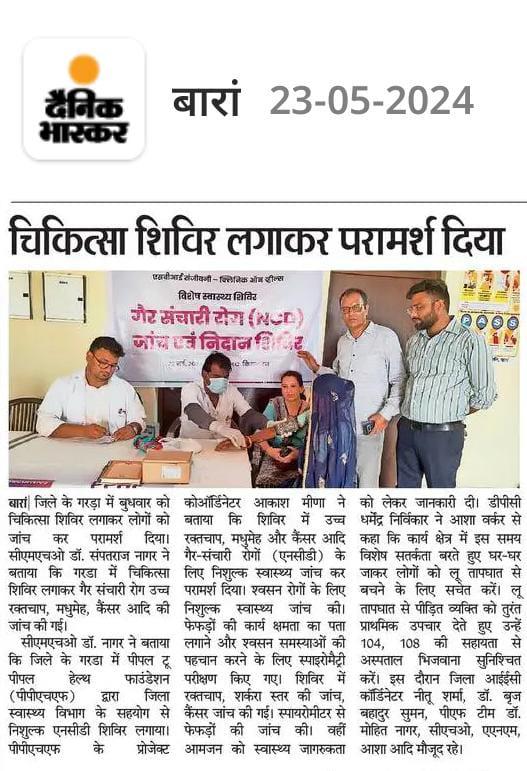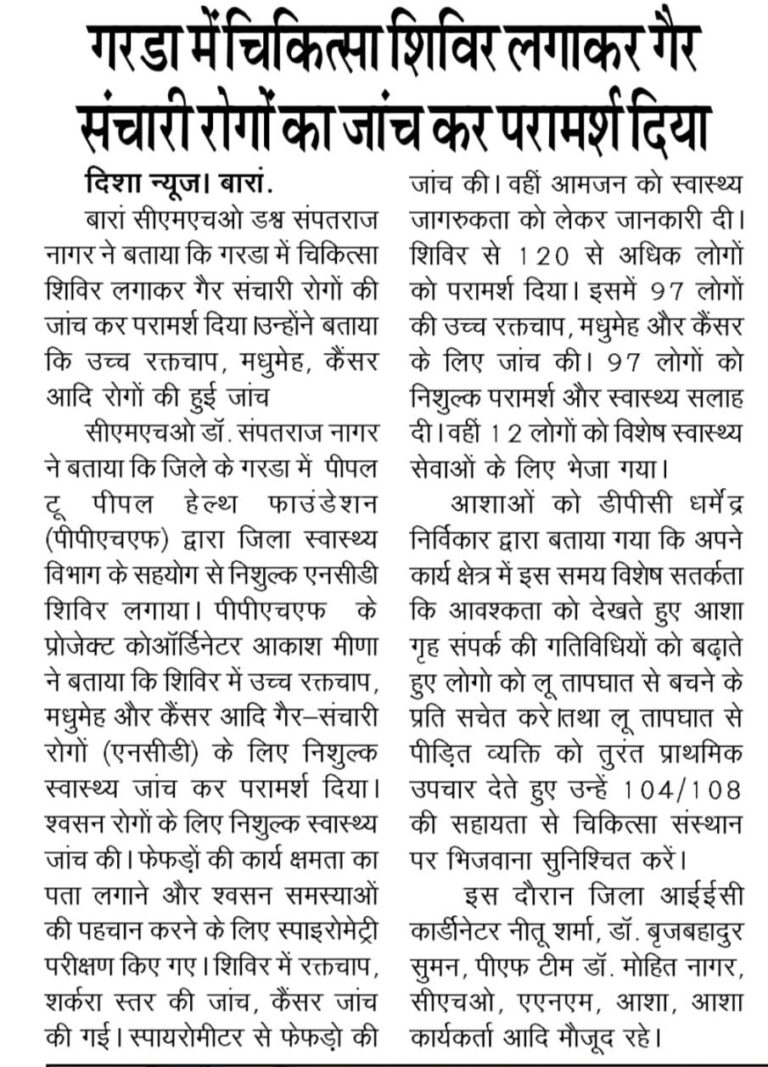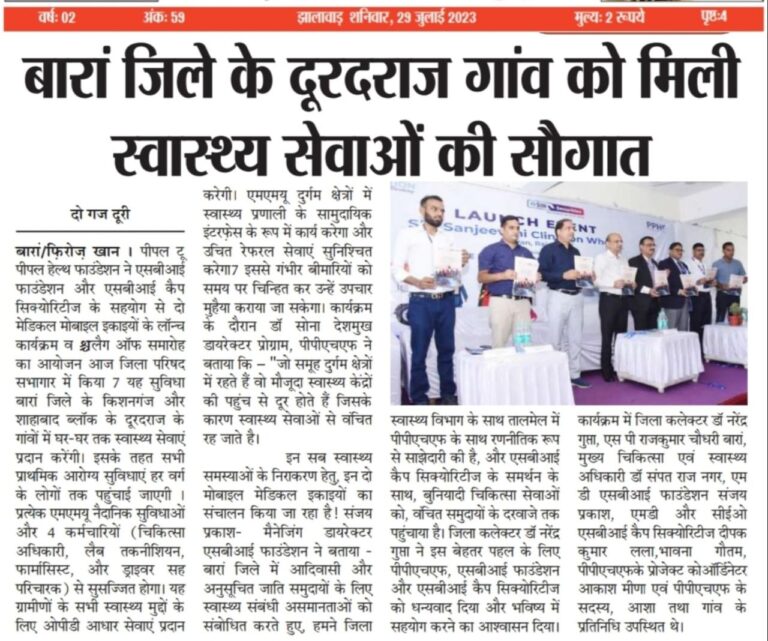A robust approach and transformative framework supported by efficient leadership, financial aid, and awareness are the need of the hour to control the behemoth of rare diseases in India.
A robust approach and transformative framework supported by efficient leadership, financial aid, and awareness are the need of the hour to control the behemoth of rare diseases in India. A holistic approach at the national level is essential to implement policies and strategies to combat the existing and future challenges in the country. Furthermore, early diagnosis, funding for research, availability of medicines and therapies, regular monitoring, patients registry, digital access and better education are also crucial at this juncture to cope with the challenges for a healthy future. Dr. Laxmikant Palo, CEO, PPHF shares his views on the situation of rare diseases in India and how the country can tackle them. Excerpt:
What are the current challenges and situations of rare diseases in India?
Rare diseases pose unique challenges to society and healthcare systems. Globally, some 7,000 rare diseases have been identified out of which only 5% are treatable.In India, about 450 such conditions have been reported thus far; with approximately 80 per cent having a genetic origin. Being majorly genetic in nature, these diseases disproportionately impact children. Biggest challenge in the rare disease space is access to awareness, early diagnosis and treatment which is a result of so many factors like absence of a national framework, higher cost of diagnosis and treatment, lack of research etc. The Government of India is committed to the cause since 2017 and we are soon expecting a robust program framework in India.
Many rare diseases have no initial symptoms but gradually these start to build upon and manifest in the form of delayed milestones in children, other deformities could be there. It really depends on disease to disease. Diagnosis of rare diseases is another challenging area and based on the discussions during the Global Rare Disease Conference 2021 held on 28th February, we have observed patient stories where their diagnosis got delayed by 7 years or even more because of the lack of awareness about these diseases and the complexities it entails. Many states don’t even have an in-house facility for various diagnostic tests that are available, and patients are referred to super speciality hospitals outside the state.
3. Who are the most affected by rare diseases? What are the causes?
Many rare diseases are genetic in nature, so these majorly affect children: 50% of new cases are in children and are responsible for 35% of deaths before the age of 1 year, 10% between the ages of 1and 5 years and 12% between 5 and 15 years.
What are the available treatments? What are the average treatment costs?
Draft rare disease policy has clearly listed rare diseases recorded in India into three categories and most of the categories have treatment available ranging from one-time organ transplant to nutritional supplements for medical purpose to life-long enzyme replacement therapies treatment cost of which keeps increasing with the age and weight of the child. Category 3 has diseases for which definitive treatment is available, but challenges are to make optimal patient selection for benefit, extremely high cost and lifelong therapy. Category 3A includes rare diseases where treatment cost is very high, but literature shows positive outcomes on the life of patients but class 3B is one grey area where treatment cost is one issue, but more than that data is either awaited or available for very less number of patients making standardization of inference and outcomes difficult. As per the Ministry of Health and Family Welfare’s (MoHFW) estimates the treatment cost of most genetic disorders may vary between INR 1.8 to 17 million.
Considering such high costs, Nation should plan for a sustainable funding mechanism in place to ensure sustained treatment to the patients with rare diseases. The potential sources of such sustainable funding could be: a) Centre and State contribution (in 60:40 ratio) through NHM, based on the existing PIP model could be adapted for rare diseases as well; b) Dedicate a portion of Health Cess; c) Create National Rare Diseases Treatment Fund; pooling of CSR and PSU funds and provision for tax benefits to companies donating to it via amendment in Companies Act Schedule VII of CSR provisions; d) Develop a collaborative co-pay model with the Central Govt – State Govt- Industry partnership and define the percentage break up of cost sharing; e) Formulate guidelines for medical insurance to cover the costs for specific diseases requiring supportive therapies.
What is PPHF doing to tackle the challenges of Rare diseases?
PPHF has been actively working on tackling the current situation of rare diseases in India by working on collaborative model with public- private partnerships. Considering the importance of Rare Diseases for achieving health goal of India, PPHF facilitated a review process to understand the policy and program from leaders in the central and state government, experts, and industry along with review of secondary and published information. As an outcome of the review, a need of creating a supportive policy environment in India was felt and so, Together for Rare: A Blueprint for Rare Diseases in India, a pioneering initiative designed as multi-stakeholder initiative and collaboration focused on rare diseases was born. The initiative has organized multiple national, sub-national and Global conferences in partnership with Niti Aayog, Japan Embassy, Multiple State Governments and Takeda. The initiative included multiple strategic collaborators too. It generated dialogues, built synergies, and brought forward a concrete and actionable comprehensive charter as an outcome and reinforced commitment on it for the cause. Moving forward, the initiative plans to share the recommendations widely amongst the key decision makers to be put to best use. We also plan to be prepared with robust implementation models so these can be rolled-out at the national and sub-national level as soon as the policy is out.
What is the response from the government?
Government has been proactive both at the national and sub-national level. We already have some excellent case studies from states like Karnataka who are committed to providing support to rare disease patient, but a lot more needs to be done. Government is working collaboratively to develop a robust policy which is expected soon now. ICMR has already established a registry mechanism for rare diseases and we are hopeful to have some good data for guiding us in future.
Is there a lack of awareness of rare diseases? What should be done to overcome this challenge?
Any and every disease life cycle has stages, and each disease passes through the stage of unawareness initially which increases gradually as the number of cases increases. For instance, diabetes and hypertension. But rare diseases are a class of diseases which are not prevalent in every second or third house, which explains the unawareness around the issue amongst the general population. But what is alarming is that this unawareness prevails amongst the many healthcare professionals too which roots deep into the medical training they get. This further increases the complexities of the disease for the patients. Similarly, there is unawareness amongst various other players who can play a key role at reducing the burden of rare diseases like the funders because they have not been approached by many health organizations to fund for rare diseases.
There is a need to create advocacy platforms, generate dialogues and collect wisdom for working collaboratively in future creating awareness at all levels following an ecosystem approach.
Source : https://www.financialexpress.com




